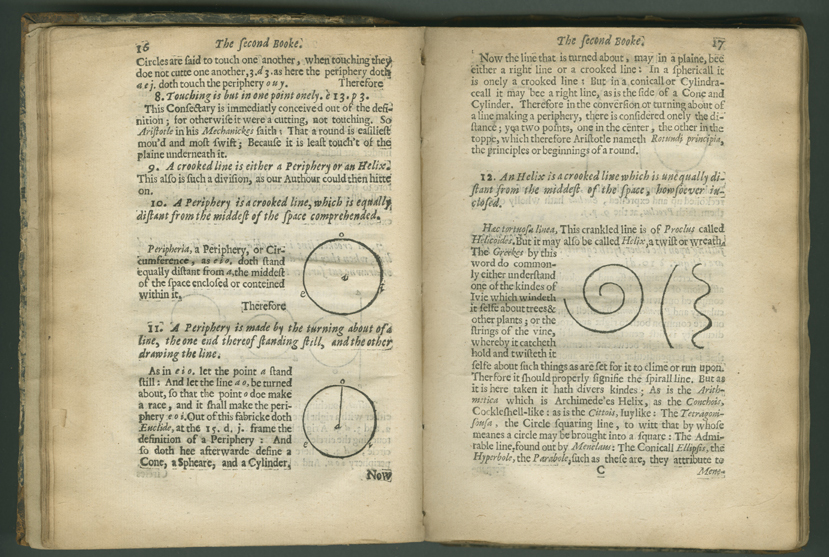- About MAA
- Membership
- MAA Publications
- Periodicals
- Blogs
- MAA Book Series
- MAA Press (an imprint of the AMS)
- MAA Notes
- MAA Reviews
- Mathematical Communication
- Information for Libraries
- Author Resources
- Advertise with MAA
- Meetings
- Competitions
- Programs
- Communities
- MAA Sections
- SIGMAA
- MAA Connect
- Students
- MAA Awards
- Awards Booklets
- Writing Awards
- Teaching Awards
- Service Awards
- Research Awards
- Lecture Awards
- Putnam Competition Individual and Team Winners
- D. E. Shaw Group AMC 8 Awards & Certificates
- Maryam Mirzakhani AMC 10 A Awards & Certificates
- Two Sigma AMC 10 B Awards & Certificates
- Jane Street AMC 12 A Awards & Certificates
- Akamai AMC 12 B Awards & Certificates
- High School Teachers
- News
You are here
Pantas’ Cabinet of Mathematical Wonders: Images and the History of Mathematics – Introduction
Introduction
A few years ago while visiting the British Museum, I was attracted to a display case containing cuneiform tablets from the Old Babylonian Period (1800–1600 BCE). One tablet in particular attracted my attention; it was a palmsized oval with several columns of characters. Consulting the information supplied about this tablet, I learned that it was a sexagesimal multiplication table. Here was evidence of a young student, probably a scribe in training, learning his (n.b. Babylonian scribes were males) multiplication facts thousands of years ago. This realization impressed upon me the continuity of mathematics and its required learning tasks over a period of 4000 years. But what would impress me even more deeply was the imprint of a human finger that accompanied the numerals and was preserved in the hard baked clay surface. It jarred me both emotionally and conceptually. This mark served as testimony to the human involvement with mathematics; it reinforced the fact that a person, an individual, did this mathematics. Despite further years of study and research on the history of mathematics, the impact of this image—affirming the need to acknowledge and attempt to understand the persistent human involvement with mathematics—has remained with me. An old adage says that “One picture [or image] is worth a thousand words.” I certainly believe this.
For many years, one of my major professional ventures has been to convince mathematics teachers, at all levels, to incorporate the history of mathematics, the record of human involvement, into their teaching. I feel such an endeavor helps to humanize the subject; that is, to remove its aura of mystery and better reveal mathematics as a natural, human activity. Usually, teachers appreciate the implications of this association, but then the practical task of just how to incorporate history into mathematics teaching arises. Teaching time is valuable and examination standards must be met. If historical insights are to be provided they must be effective and minimally intrusive. Working with teachers, we have explored several appropriate strategies, including:
- the use of occasional anecdotes or brief stories from the history of mathematics,
- employing historically-related mathematical learning tasks in small group settings [Swetz 1994],
- and the classroom assignment of actual historical word problems [Swetz 2012].
Generally, such attempts, if diligently undertaken, have produced favorable results. Still, the expenditure of “valuable” classroom time remains a deep concern for teachers. One effective solution to this issue is the use of visually-centered displays: images and posters that pertain to relevant historical personages and achievements. Images can be used as part of the classroom instruction—illustrating, enriching and reinforcing the specific concept being discussed—or as a passive learning aid—displayed to attract student attention, arouse curiosity, and perhaps prompt further investigation. Extra-credit reports can be centered about an image; for example (see Figure 1), “Here is a copy of two pages from a nearly 400-year-old English geometry book. What do you recognize? What unusual things do you see?”

Figure 1. Pages from The Way to Geometry, a 1636 English translation of a text written in 1596 by Peter Ramus. (Image presented courtesy of the Rare Book and Manuscript Collection at Columbia University. You may use this image in your classroom; all other uses require permission from the Columbia University Libraries.)
Another source for pages similar to the pair above is Robert Recorde’s 1551 The Pathway to Knowledge, Containing the First Principles of Geometrie, which is available in facsimile [1551/1974].
Frank J. Swetz (The Pennsylvania State University), "Pantas’ Cabinet of Mathematical Wonders: Images and the History of Mathematics – Introduction," Convergence (May 2015), DOI:10.4169/convergence20150502




